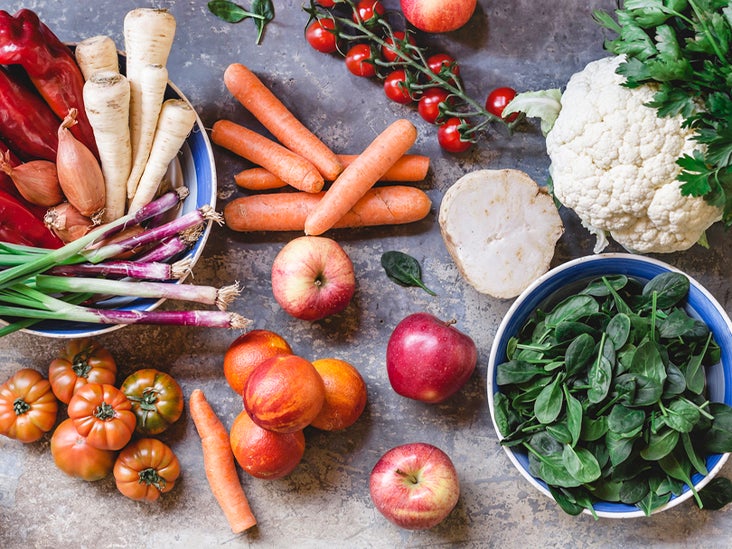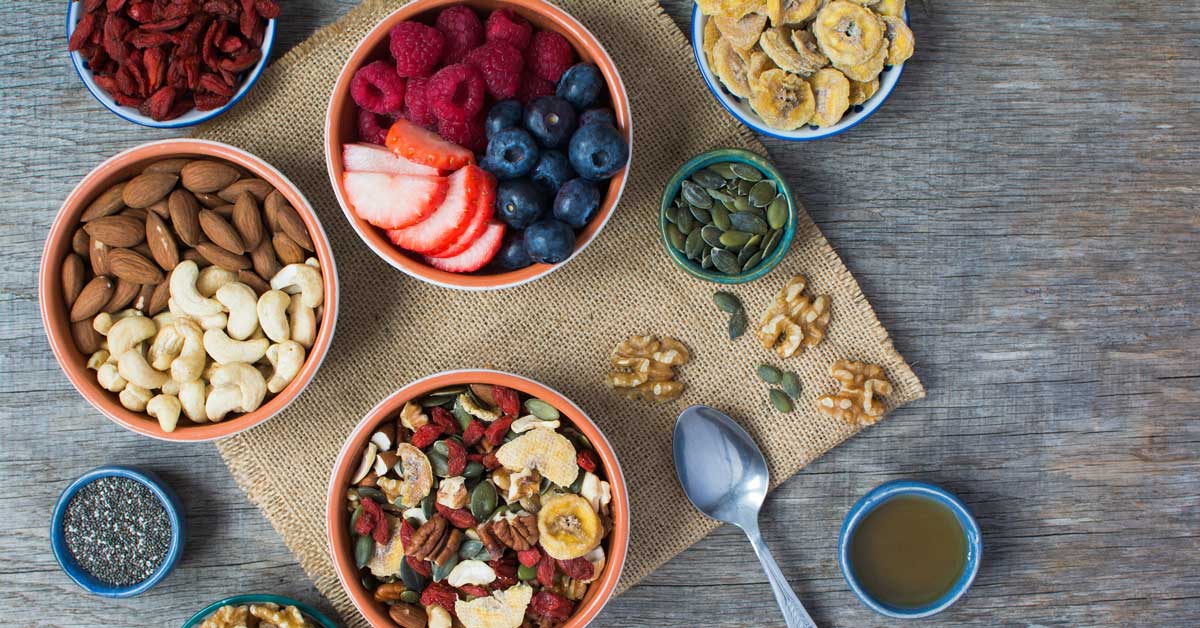Written by Daisy Coyle, APD — Medically reviewed by Jillian Kubala, MS, RD —
Updated on June 30, 2020
The low glycemic (low GI) diet is based on the concept of the glycemic index (GI).
Studies have shown that the low GI diet may result in weight loss, reduce blood sugar levels, and lower the risk of heart disease and type 2 diabetes.
However, the way it ranks foods has been criticized for being unreliable and failing to reflect foods’ overall healthiness.
This article provides a detailed review of the low GI diet, including what it is, how to follow it, and its benefits and drawbacks.
What is the glycemic index (GI)?
Carbohydrates are found in breads, cereals, fruits, vegetables, and dairy products. They’re an essential part of a healthy diet.
When you eat any type of carb, your digestive system breaks it down into simple sugars that enter the bloodstream.
Not all carbs are the same, as different types have unique effects on blood sugar.
The glycemic index (GI) is a measurement system that ranks foods according to their effect on your blood sugar levels. It was created in the early 1980s by Dr. David Jenkins, a Canadian professor (1).
The rates at which different foods raise blood sugar levels are ranked in comparison with the absorption of 50 grams of pure glucose. Pure glucose is used as a reference food and has a GI value of 100.
The three GI ratings are:
- Low: 55 or fewer
- Medium: 56–69
- High: 70 or more
Foods with a low GI value are the preferred choice. They’re slowly digested and absorbed, causing a slower and smaller rise in blood sugar levels.
On the other hand, foods with a high GI value should be limited. They’re quickly digested and absorbed, resulting in a rapid rise and fall of blood sugar levels.
You can use this database to find the GI value (and glycemic load, described below) of common foods.
It’s important to note that foods are only assigned a GI value if they contain carbs. Hence, foods without carbs won’t be found on GI lists. Examples of these foods include:
- beef
- chicken
- fish
- eggs
- herbs
- spices
Factors that affect the GI of a food
A number of factors can influence the GI value of a food or meal, including:
The type of sugar it contains. There’s a misconception that all sugars have a high GI. The GI of sugar ranges from as low as 23 for fructose to up to 105 for maltose. Therefore, the GI of a food partly depends on the type of sugar it contains.
The structure of the starch. Starch is a carb comprising two molecules — amylose and amylopectin. Amylose is difficult to digest, whereas amylopectin is easily digested. Foods with a higher amylose content will have a lower GI (2).
How refined the carb is. Processing methods such as grinding and rolling disrupt amylose and amylopectin molecules, raising the GI. Generally speaking, the more processed a food is, the higher its GI (2).
Nutrient composition. Adding protein or fat to a meal can slow digestion and help reduce the glycemic response to a meal (3, 4).
Cooking method. Preparation and cooking techniques can affect the GI too. Generally, the longer a food is cooked, the faster its sugars will be digested and absorbed, raising the GI.
Ripeness. Unripe fruit contains complex carbs that break down into sugars as the fruit ripens. The riper the fruit, the higher its GI. For example, an unripe banana has a GI of 30, whereas an overripe banana has a GI of 48 (5).
The amount of carbs is also important
The rate at which foods raise blood sugar levels depends on three factors: the types of carbs they contain, their nutrient composition, and the amount you eat.
However, the GI is a relative measure that doesn’t take into account the amount of food eaten. It’s often criticized for this reason (1).
To solve this, the glycemic load (GL) rating was developed.
The GL is a measure of how a carb affects blood sugar levels, taking both the type (GI) and quantity (grams per serving) into account.
Like the GI, the GL has three classifications:
- Low: 10 or fewer
- Medium: 11–19
- High: 20 or more
The GI is still the most important factor to consider when following the low GI diet.
However, the Glycemic Index Foundation, an Australian nonprofit raising awareness about the low GI diet, recommends that people also monitor their GL and aim to keep their total daily GL under 100.
Otherwise, the easiest way to aim for a GL under 100 is to choose low GI foods when possible and consume them in moderation.











